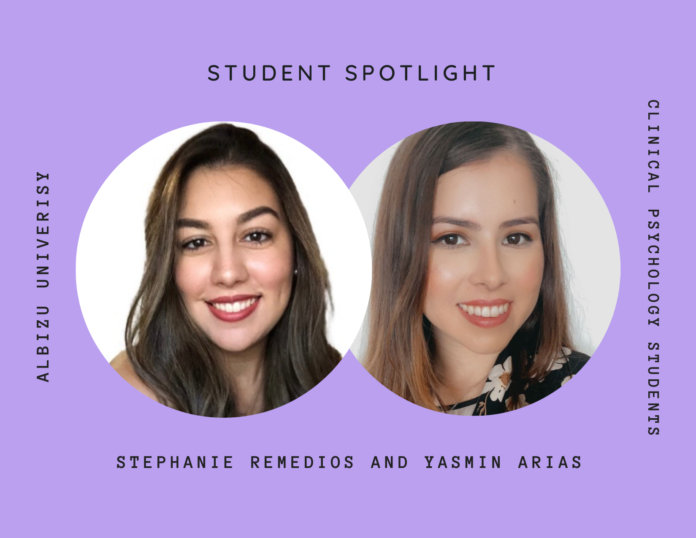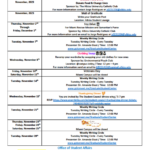Stephanie Remedios & Yasmin Arias
Introduction
The COVID-19 virus has forced us to develop many acute and drastic lifestyle changes, such as elevated
hygienic procedures, increased sanitization standards, and stringent health & safety protocols. In addition
to these newly added safety measures, the COVID-19 “new normal” also brought along with it some
unprecedented emotional and psychological disturbances that many individuals were not prepared to face.
Social distancing and isolation very rapidly morphed from a benign safety precaution to a period of
psychological torment. A once idealized plan implemented to contain and prevent the COVID-19 virus
from infecting the mass population has come with detrimental emotional side effects in the form of
loneliness, anxiety, panic, depression, and in severe cases, Post-Traumatic Stress Disorder (Hwang et al.,
2020). Along with its emotional implications, the social consequences of lack of social interaction also
appear to be taking their toll on society, with social anxiety becoming more prevalent while social skills
plummet. The negative effects of isolation impact all populations; however our clinical experience
demonstrated that older adults and pediatric populations seem to be presenting the most emotional and
social repercussions.
Emotional impact
A major consequence that we have noted from our clinical experience is the influx of older individuals
reporting newfound emotional disturbances, primary loneliness. Loneliness refers to the subjective feeling
of sadness due to a lack of friends or company. The geriatric population is more reliant on family, friends,
and caregivers; therefore, the sudden shift in social norms forced these individuals to become fully
autonomous at a moment’s notice. While this isolation was necessary to protect this vulnerable population
from a fatal consequence, the very act meant to protect them is causing significant emotional harm due to
the magnitude of social disconnect they have been experiencing. What once began as a social distance
quickly became a complete social disconnect. Consequently, loneliness brings about its own set of
challenges, including both physical and mental repercussions. Physical effects include elevated systolic
blood pressure and increased risk for heart disease (Hwang et al., 2020). Emotionally, depressive
symptoms appear to be the main adverse side effect of loneliness, including reduced sleep quality and
difficulty getting to sleep, lower energy levels, increased fatigue, irritability, and both suicide attempts and
completed suicides (Pietrabissa & Simpson, 2020).
Social Impact
The COVID-19 pandemic is playing a pivotal role in our children’s early social development, or lack
thereof. Language delays and social deficits are being noted, especially in preschool-age children.
Although young children are not deemed a vulnerable population regarding the COVID-19 virus, their
participation in social distancing is crucial due to their role in spreading the virus to vulnerable
individuals. The rise of electronic schooling or “remote learning” has led to children missing out on
crucial social skills and interactions necessary for their developmental success. Conversational skills,
pragmatics, manners, body language, and social cues are all forms of communication children learn
through play and modeling behaviors with classmates and teachers. (Stites et al., 2020)On the other hand, older school-age children who did attend typical school before the implementation of
remote learning did acquire all the necessary social skills and language development from their schooling.
Nevertheless, they are now underutilizing these skills due to a lack of practice, leading to an increase in
the prevalence of social anxiety cases in these individuals. Social anxiety is a mental health condition in
which a persistent and intense fear of being judged by others is present. The most common repercussion
seen in our clinical training is teenagers who are insecure in their interpersonal abilities or feel “socially
awkward.” These teenagers hesitate to order pizza due to experiencing anxiety having to speak to
someone over the phone. Their inability to initiate or carry out conversations with others is credited to
“not wanting to sound stupid.” It is clear that this lack of appropriate socialization is drastically affecting
these individual’s quality of life, and by the looks of it, no resolution seems to be approaching.
Consequences
It is assumed, based on extensive data from previous pandemics, along with what has been emerging in
studies from this current pandemic, that psychological morbidity will rise. It seems to be a trend that early
phases of the pandemic do not warrant an increase in mental health presentations. However, the
anticipated increase in mental illness, with potential also for increased suicidality, is deemed most likely
in the mid-and post-pandemic phase, as economic contraction, constrained mental healthcare resources,
individual vulnerabilities, and the stark reality of dramatically altered lifestyles combine (Gavin et al.,
2020). With these issues in mind, there have justifiably been calls for increased mental health services and
collaborative international efforts to address issues such as suicide prevention.
Conclusion
As the COVID-19 pandemic progresses, priority must be given to evaluate how mental health services
will evolve and how we can best address them. We especially need to determine how we can alleviate the
mental health consequences for vulnerable groups. There is also an urgent need to learn more about the
impact of public health measures on the general population’s psychological well-being due to lockdowns
(Gavin et al., 2020). We need an increased understanding and awareness on how to increase social
interactions while maintaining safety standards and protocols. Social interaction is beneficial to
maintaining brain health, minimizing stress, developing social skills, and forming deep, lasting
relationships.
Authors’ Bio:
Stephanie Remedios is a third-year PsyD student pursuing a concentration in Neuropsychology. Her
research interests include pediatric neuropsychology populations, primarily individuals on the Autism
Spectrum. Stephanie’s research goal is to develop a curriculum tailored to special education students with
Autism to optimize learning through positive interactions, real-world experiences, incorporation of
interactive components.
Yasmin Arias is a third-year PsyD student pursuing a concentration in Neuropsychology. She has
experience working with the Alzheimer’s population clinically and in research at Mount Sinai Medical
Center (Wien Center). She recently presented Covid-19 related research at the 2021 APA Virtual
Conference. Currently, she is collaborating with researchers at Albizu University for the SpanishNormative Study. This study aims to establish the cognitive functioning performance of neurologically
healthy adults who are Spanish-speaking using standardized neuropsychological measures to develop new
normative test data for this demographic population.
References
Gavin, B., Lyne, J., & McNicholas, F. (2020). Mental health and the COVID-19 pandemic. Irish journal
of psychological medicine, 37(3), 156-158.
Hwang, T. J., Rabheru, K., Peisah, C., Reichman, W., & Ikeda, M. (2020). Loneliness and social isolation
during the COVID-19 pandemic. International psychogeriatrics, 32(10), 1217-1220.
Pietrabissa, G., & Simpson, S. G. (2020). Psychological consequences of social isolation during
COVID-19 outbreak. Frontiers in Psychology, 11, 2201.
Stites, M. L., Sonnenschein, S., & Galczyk, S. H. (2020). It’s not just ABCs–preschool parents worry
their kids are missing out on critical social skills during the pandemic. UMBC Education
Department.










